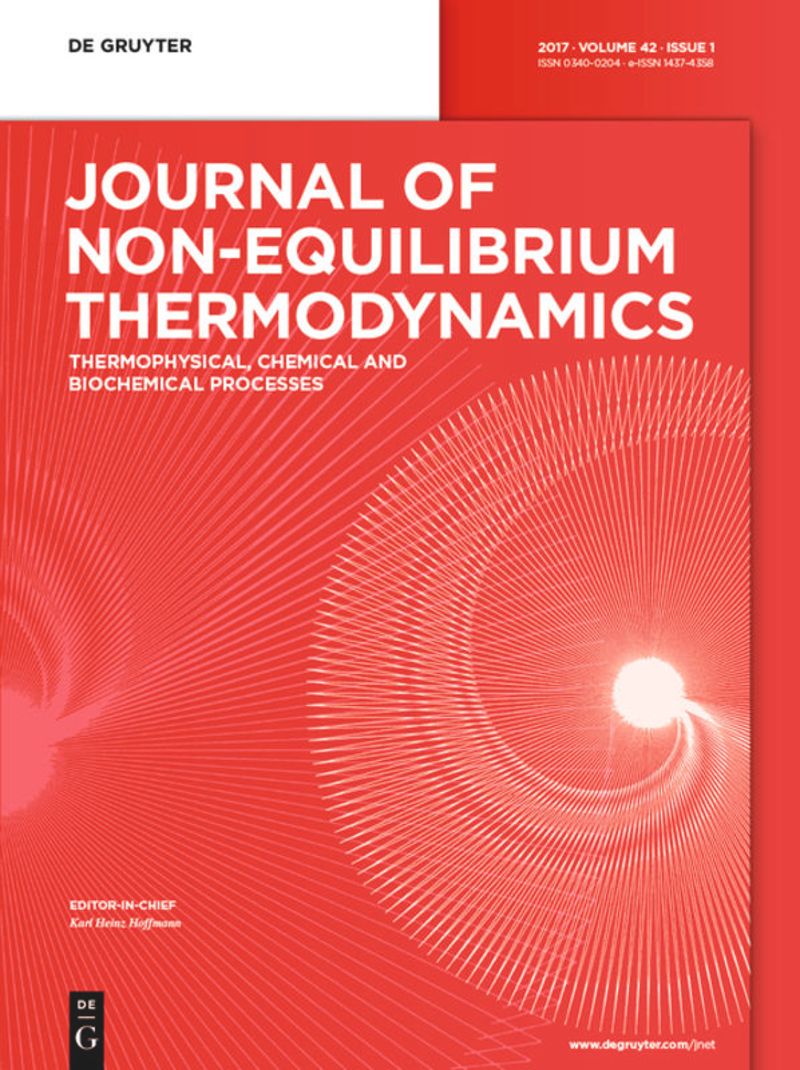Power Density Analysis and Multi-Objective Optimization for an Irreversible Dual Cycle
IF 4.3
3区 工程技术
Q1 MECHANICS
引用次数: 40
Abstract
Abstract Considering the various irreversibility conditions caused by heat transfer and working processes in a dual cycle, the power density performance is optimized by applying finite-time thermodynamics theory, and multi-objective optimization is performed by using NSGA-II. The effects of cut-off ratio, maximum cycle temperature ratio, and various losses by heat transfer and working processes on the relationships between the power density and the compression ratio and between the power density and the thermal efficiency are analyzed. The thermal efficiency and engine size obtained under the conditions of maximum power output and power density are discussed. The results show that for a dual cycle, the heat engine has a smaller size and higher thermal efficiency under the condition of maximum power density. The cycle compression ratio and cut-off ratio are selected as decision variables, and the dimensionless power output, thermal efficiency, dimensionless ecological function, and dimensionless power density are selected as objective functions. Multi-objective optimization is performed with different objective combinations. The deviation indexes under the LINMAP, TOPSIS, and Shannon entropy approaches are discussed, and the number of generations when the genetic algorithm reaches convergence are obtained. The results show that the genetic algorithm converges at the 341st generation for the quadru-objective optimization, at the 488th generation for the tri-objective optimization, and at the 399th generation for the bi-objective optimization. When the bi-objective optimization is performed with dimensionless power output and dimensionless ecological function as the objective functions, the deviation index obtained based on the LINMAP approach is 0.1400, which is better than those obtained for other single- and multi-objective optimizations.不可逆双循环的功率密度分析与多目标优化
摘要考虑到双循环中由传热和工作过程引起的各种不可逆性条件,应用有限时间热力学理论对功率密度性能进行了优化,并使用NSGA-II进行了多目标优化。分析了截止比、最大循环温度比以及传热和工作过程中的各种损失对功率密度与压缩比之间以及功率密度与热效率之间关系的影响。讨论了在最大功率输出和功率密度条件下获得的热效率和发动机尺寸。结果表明,对于双循环,在最大功率密度条件下,热机具有较小的尺寸和较高的热效率。选择循环压缩比和截止比作为决策变量,选择无量纲功率输出、热效率、无量纲生态函数和无量纲功率密度作为目标函数。使用不同的目标组合执行多目标优化。讨论了LINMAP、TOPSIS和Shannon熵方法下的偏差指标,并获得了遗传算法达到收敛时的代数。结果表明,对于四目标优化,遗传算法在第341代收敛,对于三目标优化,在第488代收敛,而对于双目标优化,则在第399代收敛。当以无量纲功率输出和无量纲生态函数为目标函数进行双目标优化时,基于LINMAP方法获得的偏差指数为0.1400,优于其他单目标和多目标优化。
本文章由计算机程序翻译,如有差异,请以英文原文为准。
求助全文
约1分钟内获得全文
求助全文
来源期刊
CiteScore
9.10
自引率
18.20%
发文量
31
审稿时长
1 months
期刊介绍:
The Journal of Non-Equilibrium Thermodynamics serves as an international publication organ for new ideas, insights and results on non-equilibrium phenomena in science, engineering and related natural systems. The central aim of the journal is to provide a bridge between science and engineering and to promote scientific exchange on a) newly observed non-equilibrium phenomena, b) analytic or numeric modeling for their interpretation, c) vanguard methods to describe non-equilibrium phenomena.
Contributions should – among others – present novel approaches to analyzing, modeling and optimizing processes of engineering relevance such as transport processes of mass, momentum and energy, separation of fluid phases, reproduction of living cells, or energy conversion. The journal is particularly interested in contributions which add to the basic understanding of non-equilibrium phenomena in science and engineering, with systems of interest ranging from the macro- to the nano-level.
The Journal of Non-Equilibrium Thermodynamics has recently expanded its scope to place new emphasis on theoretical and experimental investigations of non-equilibrium phenomena in thermophysical, chemical, biochemical and abstract model systems of engineering relevance. We are therefore pleased to invite submissions which present newly observed non-equilibrium phenomena, analytic or fuzzy models for their interpretation, or new methods for their description.

 求助内容:
求助内容: 应助结果提醒方式:
应助结果提醒方式:


